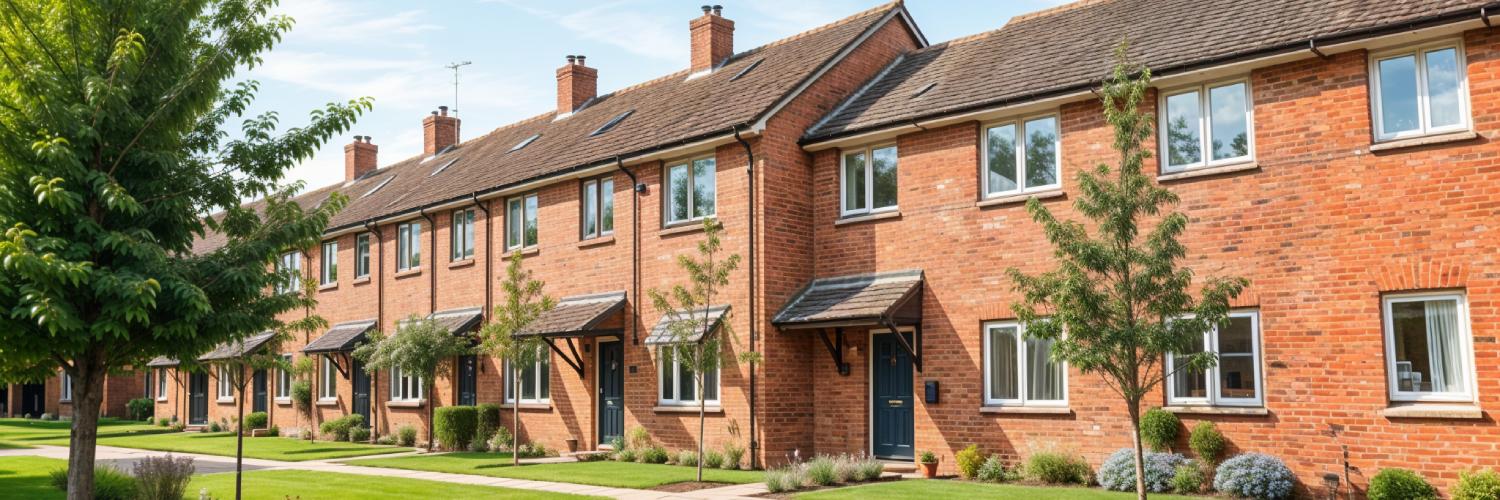You can get a bridging loan without owning a house by using the property you’re buying as security. This works for first-time investors, auction buyers, and business owners buying commercial premises. Minimum loans start at £150,000 through specialist brokers with access to 250+ lenders.
You’ve found an investment property that ticks all your boxes. Maybe it’s an auction purchase, or perhaps it’s an unmortgageable property you plan to renovate and sell.
The problem? You don’t currently own a property, and everything you’ve read about bridging finance seems aimed at existing homeowners moving between properties. You’re starting to wonder if you’re locked out of this option before you’ve even started.
Here’s the short answer that might surprise you: yes, you can get a bridging loan without owning a house.
The property you’re buying becomes your loan security, and this happens more often than you’d think. It’s a standard approach that specialist lenders use every day to help first-time investors, auction buyers, and business owners secure property quickly.
What we’ll cover here is how this works when you have no existing property, who uses this approach and what it actually costs.
How Bridging Finance Works Without Existing Property
The mechanics here are simpler than you might expect, even though the concept feels counterintuitive at first. You’re borrowing money secured against a property you don’t own yet, which sounds impossible until you understand how property transactions and legal charges actually work.
The Property Becomes Your Security
Here’s how the sequence works in practice.
When you exchange contracts on a property purchase, you become legally committed to buying that property. You don’t own it yet, but you have a binding contract that says you will own it on completion day. The bridging lender works alongside this process, preparing all their legal documentation between exchange and completion so everything is ready to go.
On completion day, two things happen almost simultaneously: the lender releases their funds so you can complete the purchase and take legal ownership, and immediately after completion they register a first legal charge against the property with the Land Registry.
What this first charge means in practice is that the lender has priority claim on the property if you can’t repay the loan.
They’re not lending to you based on your credit score or a long assessment of your other assets. They’re lending against this specific property’s value, secured by their legal charge that gets registered as soon as you own it. The whole process from your initial application through to completion and charge registration can happen in 5 to 21 days, which is why bridging finance works for time-sensitive purchases.
Let me walk you through a straightforward example.
You’re buying a property for £300,000, and you have £75,000 available as your deposit. A bridging lender agrees to provide £225,000, which represents 75% of the property’s value. This percentage is called the loan-to-value ratio, or LTV.
On completion day, the lender releases that £225,000 along with your £75,000 deposit so you can complete the purchase. Once you legally own the property, the lender immediately registers their first charge against it with the Land Registry. If something goes wrong and you default on the loan, the lender can force the sale of that property to recover their money. Your £75,000 deposit shows you have genuine commitment to the purchase, and the property’s £300,000 value gives the lender a substantial buffer above their £225,000 loan.
What About LTV Ratios?
The loan-to-value ratio determines how much you can borrow as a percentage of the property’s value.
Without an existing property you’ll face slightly more conservative LTV limits than an experienced investor with a proven track record might receive. Think 70-75% rather than the 80-85% that established developers sometimes access, but this still gives you substantial borrowing capacity.
On a £250,000 property at 75% LTV, you’d get £187,500 from the lender, which means you need £62,500 as your deposit, plus fees and costs. The lender’s risk is covered by that 25% equity buffer you’ve put in, combined with the fact they hold a legal charge allowing them to sell the property and recover their funds.
Your lack of other property assets doesn’t fundamentally change this security arrangement. The property itself is what matters.
Why We Only Arrange Unregulated Loans
We need to be clear about what we can and can’t help you with.
Bridging loans come in two types: regulated and unregulated.
Regulated bridging loans are for properties you’ll live in as your main residence, they’re governed by Financial Conduct Authority rules, have a maximum 12-month term, and come with extensive consumer protections. These exist, and other brokers arrange them, but we don’t work in this market.
We specialise exclusively in unregulated bridging finance, which covers investment properties, commercial premises, and business purposes.
This is where our expertise lies, and it’s where we have access to 250+ specialist lenders who move quickly and offer flexible terms. The unregulated market works differently from regulated lending. Decisions happen faster, terms extend beyond 12 months when needed, and lenders focus primarily on the property’s value and your exit strategy rather than affordability calculations designed for residential mortgages.
What counts as unregulated lending for our purposes?
Buy-to-let residential properties you’ll rent out, commercial premises you’ll use for business or lease to tenants, semi-commercial buildings with mixed residential and business use, properties you’ll refurbish and sell for profit, or auction purchases you’re adding to an investment portfolio.
The property can eventually become your home if you later refinance to a standard residential mortgage, but during our bridging loan term it must remain an investment or business asset. For first-time property buyers, this distinction reshapes how you think about your purchase. You’re not becoming a first-time homeowner through this route. You’re becoming a first-time investor.
Read more: Regulated vs Unregulated Bridging Loans: Which One Do You Need?

Who Actually Uses This Approach
You’ll find three main groups of borrowers using this approach, each facing different challenges that bridging finance solves.
First-time investors
First-time investors entering the buy-to-let market represent a substantial portion of borrowers.
These buyers have saved a deposit of £50,000 to £100,000 and identified a property that would generate good rental yields, but they face competitive markets where speed makes the difference between securing the property and losing it to another buyer. You can’t wait three to four months for a standard buy-to-let mortgage application to wind through the system when a seller wants completion in three weeks.
A buy to let bridging loan completing in two to three weeks means you secure the property with certainty, then refinance to a buy-to-let mortgage once you own the property and have tenants in place paying rent. This two-step approach gets you into property investment when traditional finance timelines would cost you the opportunity.
Related: Buy-to-Let Bridging Loans: Fast Investment Funding
Auction purchasers
Auction purchasers face an even tighter deadline that makes bridging finance (or cash) almost mandatory.
When you successfully bid at auction, you’re legally committed to completing the purchase within 28 days.
Miss that deadline and you lose your deposit, face penalty charges, and could be sued for breach of contract. Traditional mortgages simply cannot complete within this timeframe. Most auction properties need some level of work before they meet standard mortgage lending criteria anyway, which creates a circular problem: you can’t get a mortgage because the property needs work, but you can’t do the work until you own it.
Auction bridging finance breaks this cycle by giving you the speed to complete your auction purchase, then providing six to twelve months to renovate the property and either refinance onto a standard mortgage or sell it at the improved value.
Many property investors build their entire portfolios through auction purchases, and bridging finance is how they fund those first few acquisitions before they have existing property equity to leverage.
Read more: How Auction Bridging Loans Actually Work
Business owners
Business owners represent the third major group.
If you’re self-employed or running a limited company from rented space, you might have found the right office, shop, warehouse, or industrial unit to purchase. You have business income and assets, perhaps valuable equipment or contracts, but no residential property.
Commercial bridging finance secured against the premises you’re buying gives you quick completion. This matters because commercial properties in good locations move fast. You then refinance to a commercial mortgage once your business is operating from the new premises and you’ve established trading history at that location.
The bridging loan gets you in, and the commercial mortgage provides your long-term finance.
Related: What Is Commercial Bridging Finance and When Do You Need It?
What This Actually Costs
Let me work through a concrete example using realistic numbers.
Take a £250,000 loan amount, you’d pay a 2% arrangement fee (£5,000), interest between 0.44% and 1.5% (using 1% as an example means £2,500 per month), valuation fees of £500 to £3,000, legal fees for both sides totalling £1,500 to £2,500, and an exit fee of either 1% or one month’s interest. Over six months, your total cost might reach £23,000 to £25,000. Yes, that’s a large sum of money, but you’re paying for speed and flexibility over a deliberately short timeframe.
Put this in commercial context.
If that £250,000 bridging loan helps you buy a £300,000 property you’ll sell for £350,000 after refurbishment, you’ve made £50,000 gross profit against £25,000 in finance costs. Or if it secures a buy-to-let generating £1,500 monthly rent, you’re building long-term rental income. The question isn’t whether bridging finance is cheap. The question is whether the opportunity justifies the cost of the finance that makes it possible.
Your Exit Strategy Matters
Lenders want to see a clear, realistic plan for how you’ll repay the bridging loan within the agreed term, and this scrutiny increases when you don’t have existing property equity as a safety net.
This is called your ‘exit strategy’.
If you owned other property, lenders would have more confidence that you could extend the loan term or restructure the borrowing if your original exit plan hit delays. Without that backup, your exit strategy carries significantly more weight in their decision.
You need to demonstrate exactly how you’ll repay the loan, provide evidence that your plan is achievable, and show you’ve thought through the timeline realistically.
Refinancing to a Buy-to-Let Mortgage
The most common exit route is refinancing to a buy-to-let mortgage once you own the property and have tenants in place generating rental income.
Before you even apply for bridging finance, get a mortgage agreement in principle from a buy-to-let lender showing they’ll refinance you in six to twelve months when the bridging term ends. This agreement in principle gives your bridging lender confidence that you have a viable exit planned, and it gives you certainty that you can move to cheaper long-term finance when the time comes.
The BTL mortgage rate might be 5% annually compared to the bridging loan’s 12-18% annually, so refinancing saves you substantial money while converting your short-term facility into permanent finance.
Alternative Exit Routes
Alternative exits work for different scenarios.
If you’re buying an unmortgageable property to refurbish, your exit strategy is selling the property once renovation is complete and it meets market standards. Show the bridging lender your renovation costs, timeline for the work, and market valuations for comparable properties in the area once renovated.
If you’re buying at auction for £200,000, spending £40,000 on refurbishment, and comparable renovated properties sell for £280,000, demonstrate this with estate agent valuations and recent sold prices. For commercial property purchases, your exit might be refinancing to a commercial mortgage once your business is trading from the premises.
Whichever route you choose, provide the lender with detailed evidence: project timelines, contractor quotes, market valuations, mortgage illustrations, or sale comparables. The stronger and more complete your evidence, the more confidence the lender has in approving your application.
What to Do Next
You can get bridging finance without owning a house by using the property you’re buying as your security, but you still need a cash deposit of around 25%.
Our services focus on unregulated bridging loans for investment or commercial purposes. If you’re a first-time investor, auction buyer, or business owner purchasing commercial premises, this route is designed exactly for your situation.
Here’s how to move forward.
Work out your numbers first: the purchase price of the property you want to buy, the deposit you have available, and the loan amount you need. Develop your exit strategy and gather supporting evidence, whether that’s a mortgage agreement in principle for refinancing, market valuations for a sale, or commercial mortgage illustrations for business premises.
Then speak to a specialist broker, they’ll match your specific situation to the right lender, structure your application to maximize your approval chances, and guide you through the entire process from initial assessment to completion in two to three weeks.
You don’t need existing property. You just need the right property, enough deposit, and a clear exit plan.
Get Your Bridging Loan Quote Today
Speak to a bridging finance specialist now. Our initial consultation is free and without obligation – we’ll assess your requirements and explain your options clearly.
Call us on 0330 030 5050
What Are Bridging Loans?
Bridging loans work exactly as their name suggests – they bridge the financing gap between buying property today and accessing the funds to repay tomorrow. They are flexible and quick to arrange. Property investors and…


